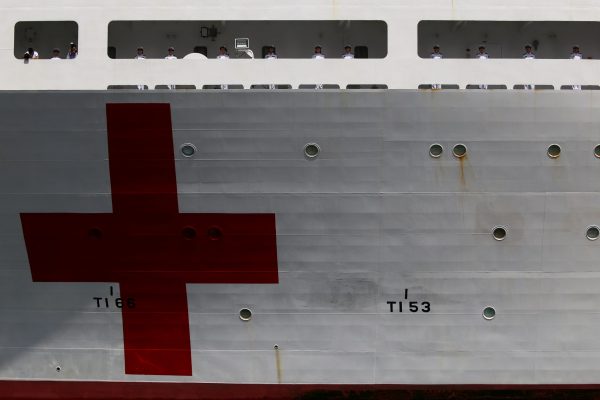China has become an important player in humanitarian aid. Though it is less discussed relative to the other forms of Chinese aid, Chinese humanitarian aid has soared in the last nearly two decades. China has been one of the top five humanitarian aid providers among non-OECD Development Assistance Committee countries since 2000, reaching US$131.2 million in 2014 alone. Since 2004, China has conducted more than 300 humanitarian aid programs overseas, at an annual growth rate of 29.4 per cent. China’s two largest humanitarian aid operations were related to relief work in response to the Indian Ocean tsunami in December 2004 and the 8.1 magnitude earthquake in Nepal in April 2015.
As China is expanding its foreign aid programs and is sparing no efforts in promoting its Belt and Road Initiative, Chinese humanitarian aid is most likely to grow alongside these efforts in support of China’s national image.
Internally, China has geared up for its humanitarian aid overseas. In September 2004 China set up an inter-ministerial response mechanism for international emergency humanitarian relief and aid. The main players include the China International Development Cooperation Agency (CIDCA) and the People’s Liberation Army (PLA), as well as several other agencies that support Chinese overseas humanitarian aid. The CIDCA is responsible for policy making, project approvals, coordination and funding management, while the PLA procures and transports disaster relief materials and equipment, and transports personnel. The PLA Navy also sends its medical ships, such as Peace Ark, to provide short-term medical tours in visiting countries.
In its approach to humanitarian aid China favours a bilateral government-to-government approach and has limited engagement with civil society in recipient countries. Chinese humanitarian aid is also dominated by the state and state-organised non-governmental organisations (NGOs) such as the Red Cross Society of China and China Foundation for Poverty Alleviation. Participation of Chinese civil NGOs in humanitarian aid overseas remains low in scope and scale and they are excluded from government-led workshops, policy making and implementation related to Chinese aid.
In a May 2019 interview, former Australian Red Cross program coordinator Tom Bamforth said that this state-centred aid model enables enormous responsiveness and quick delivery, but also questions regarding the relevance and quality of humanitarian aid raised through government requests rather than strong community consultation. By contrast, traditional donors largely channel humanitarian aid through NGOs which have strong connections to local NGOs and communities.
But humanitarian aid involves both response and recovery. The respective advantages of China’s and traditional donors’ approaches — and each of their respective aid focuses on infrastructure and capacity building — have the potential to complement each other.
The low political sensitivity of humanitarian aid could also facilitate cooperation between China and traditional donors. At the strategic level, it could enhance mutual understanding and reduce the growing tensions in their bilateral relations. As the 2016 Australian Defence White Paper notes, the Australian government is committed to conducting practical cooperation with China ‘in areas of mutual interest such as humanitarian assistance and disaster relief and countering piracy’.
Humanitarian aid cooperation additionally has the potential to reduce aid duplication and improve aid effectiveness. James Batley, former deputy director-general of AusAID and deputy secretary of the Australian Department of Foreign Affairs and Trade said in a May 2019 interview that ‘it would be a good idea for the two countries [Australia and China] to have dialogue on how humanitarian aid is delivered and whether there are ways to improve coordination. Politically, it is not very contentious. It would promote confidence between the two countries’. Indeed, the Chinese side is increasingly open to multilateral humanitarian aid operations led by United Nations agencies such as the World Food Program and World Health Organization.
To realise the potential for humanitarian aid cooperation requires enormous efforts. As a first step, China and traditional donors could include humanitarian aid in their bilateral talks to seek high-level political support. Building on existing trilateral aid projects such as the Australia–China–Papua New Guinea malaria control project, China and traditional donors could pilot trilateral humanitarian aid cooperation with recipient countries. Within such efforts, it is equally important to support recipient countries in playing a leading role in project implementation and ensuring humanitarian aid gets to people who need it.
Another opportunity is to conduct multilateral humanitarian aid cooperation facilitated by UN agencies. To promote engagement, China and traditional donors could consider sending representatives to work together in a common office in the Pacific such as under the flag of the UN Office for the Coordination of Humanitarian Affairs. In the long run, it would also be useful to promote exchanges among NGOs in China, traditional donors and recipient countries.
Dr Denghua Zhang is a Research Fellow at the College of Asia and the Pacific, The Australian National University.

